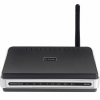Windows Secrets - "Everything Microsoft Forgot to Mention"
Brian Livingston, the founding editor of Windows Secrets, retired this past year, but he's left the website in very capable hands. The website formerly shared a simple "Security Baseline" on the free portion of the website but unfortunately, some of the latest information on the basics of home or small office security, formerly free content, now requires a paid subscription. A quick checklist of the minimum common sense security configuration for a PC from the earlier free baseline articles includes: a hardware firewall, security software, a plan to manage updates and a secure browser.
Hardware Firewall
First be sure that the built-in Firewall in Windows 7 turned on. It should be, but check it to make sure. If you have a direct connection to the Internet, a cable broadband or DSL connection, a separate home or small business router or combination router/wireless access point normally includes a built-in hardware firewall and an extra measure of security between the modem and my networked computers. Setting up a router or router/wireless access point, be sure to follow the setup directions for your particular router, change the network name and passwords from the defaults and use the strongest wireless security settings your router/access point and other wireless equipment supports. Also take notes about the settings you keep and the changes you make either in the paper version of the manual or like me, keep a notebook that contains all your network manuals or setup guides and keep a record of your changes and updates there. Believe me, there will be a day when those notes, network sketches and settings will be helpful.
Security Software
I also run at least a monthly scan alternating between free versions of MalwareBytes and SUPERAntiSpyware. Usually all I'll catch on these extra scans are cookies that share enough information with other 3rd party sites to be considered "spyware." But I like to take that extra step in the interest of privacy and security and I appreciate having both free products immediately available if I were to suspect a more serious problem.
Manage Software Updates
You also need a plan to manage all your other non-Microsoft updates and keep your browser and email packages secure. I use Personal Software Inspector (PSI) from Secunia. Start with the link, look at the screen shots and then read through the tabs until you get to the download page. Be sure to read the system requirements and other hints. For additional help before or after the installation process, Secunia provides an extensive FAQ page. Look over the topics, scan down the page to see how detailed the answers are and then use the FAQ if you need help. One final suggestion. Although PSI offers an automatic update setting, and I use it, be sure to check the icon that PSI installs with the other notifications at the bottom right of the screen after every startup. The icon should be green. If yellow or red, click on the icon to open PSI and see what action you may need to take to update your installed software.
Use a Secure Browser
If you're using Windows and not yet using Internet Explorer 9, you should be. However, many knowledgeable computer users prefer Mozilla Firefox or Google Chrome. Both third-party browsers have unique features that may cause some users to prefer one or the other. Actually on my own machines, I keep up-to-date copies of MSIE, Firefox and Chrome so I can check and occasionally troubleshoot web pages with all three browsers. Use the automatic updates provided with Chrome and Firefox to help keep your browser as secure as possible.
Final Good Idea: While you're checking out the security essentials and other articles, be sure to sign up for their FREE version of the Windows Secrets email newsletter with the latest tech info and helpful tips on Windows. After receiving a few of the free versions, you may find the small donation for the complete version is easy to justify. Although retired and no longer directly involved in IT, I still read every issue.
Back to Top



